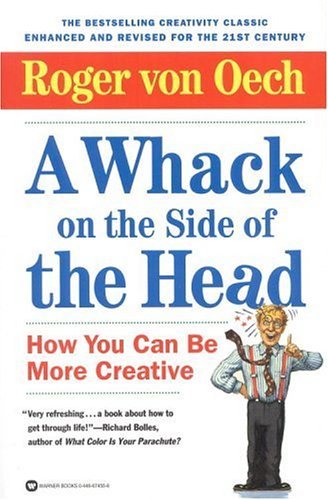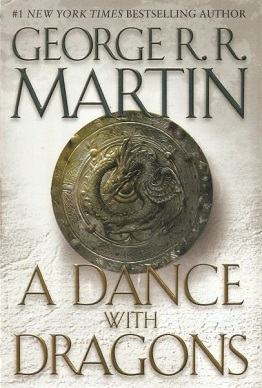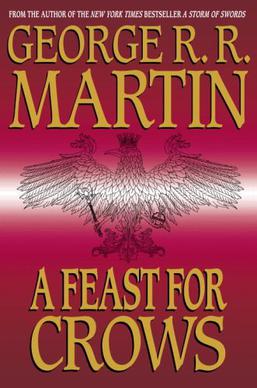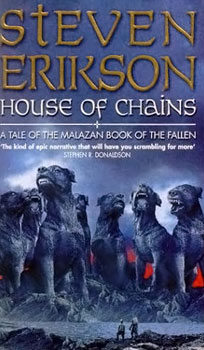
This post is extremely long. I am working on my master degree and am trying to show that creativity and play is something important to be teaching students. Therefore this is more of a in depth look at the book than a review. If you are interested please read the whole thing, but I understand if you just skip to the bottom. I do suggest that you pick this up and give it a read.
Chapter One
The Promise of Play
“[C]onsider the world without play. It’s not just the absence of games or sports. Life without play is a life without books, without movies, art, music, jokes, dramatic stories. Imagine a world with no flirting, no day dreaming, no comedy, no irony. Such a world would be a pretty grim place to live.” Pg 6
Brown uses this chapter to talk about what play has to offer us. Everyone starts out their lives playing. Where is it that we draw the line? When do people stop playing? Why? He gives examples of adults that at some point give up playing. These people eventually go back to playing again and the positive things that result in their life is significant.
“This book is about understanding the role of play and using it to find and express our own core truths” pg 13
Chapter 2
What is play and why do we do it?
Stuart describes that he is hesitant to define play. Each person’s idea of having fun is different. I like to play boardgames others like to watch baseball games.
He then lists these Properties of Play:
Apparently Purposeless (done for its own sake)
Voluntary
Inherent attraction
Freedom from time
Diminished consciousness of self
Improvisational potential
Continuation desire (pg 17)
The rest of the chapter focuses a lot on what animals do when they are playing. Many examples are given. One thing really seemed to stick out. He points out that play has to have some type of evolutionary benefit. The reason being is that we still do it. Playing can be dangerous. He gives the example of Mountain Goats that jump around on the side of mountains. Occasionally, goats die from falling when they are playing. The playful goat has survived this long therefore the benefits from play must outweigh the risks otherwise only the non-playful goats would have passed on their genes.
Chapter 3
We are built for play
Borwn starts this chapter discussing the Sea Squirt. Apparently, this sea creature has a tiny brain and uses it to search for nutrients and eventually attaches itself to a boat, or rock or dock. At this point it devours its own brain and gets all of its needs from the water that passes by.
Humans are not like this. Mammals in general are the most playful of animals, humans more so than others. Our juvenile development lasts a minimum of 15 years. Our brain continues to develop into our 20’s. But they don’t stop there. Our brains are constantly changing during our lives.
“I would say that the impulse to create art is the result of the play impulse. Art and culture have long been seen as a sort of by-product of human biology, something that just happens as we use our big, complex brains. But newer thinking is that art and culture are something that the brain actively creates because it benefits us, something that arise out of the primitive and childlike drive to play.” Pg 61
He continues with describing the eight personality types:
The Joker
The Kinsthete
The Explorer
The Competitor
The Director
The Collector
The Artist/Creator
The Storyteller pg 65-70
“When we stop playing, we stop developing, and when that happens, the laws of entropy take over – things fall apart” and then “When we stop playing, we start dying.” Pg 73
Chapter 4 Parenthood is Child’s Play
This chapter focuses on play and its role in parenting. In recent years teaching to the test, and getting the right after school activities and everything of that nature has taken precedence so we can get into the “right school.” Some benefits of this is that more now than ever people are accepting children as a part of the world. Kids have a closer relationship with adults than at any other time in history. This is mainly because kids are acting more like adults than ever before.
Play begins before we are even born. This play in the womb is the beginning of the development of our bodies. Once born a baby is constantly in a state of play. Everything they do is an exploration of their surroundings, constantly feeding information to the brain teaching it what is going on around the baby and figuring out the world.
Stuart goes on to describe different forms of play.
Imaginative Play starts when we are around 2 and is when kids make up silly stories that don’t have to start or end.
Social Play is a beginning of working with other people. This is where we learn as humans how to act in social situations and is a huge part of what makes us who we are.
Around 4-5 kids start to form friendships. Before this we have parallel play. This is where children will sit together and do the same thing but will be playing by themselves. Once friendships form we get the ability to have empathy for others.
Rough and Tumble play is shown to be a needed act. Parents typically try to put an end to this. Hitting, rough housing and wrestling will cause kids to get hurt. Brown along with Anthony Pelligrini and Joe Frost have all studied rough and tumble play. It is shown to have significant impact on our mastery of social growth. In a study of murderers in Texas the prisoners were shown to have a lack of rough and tumble play in their youth.
Celebration and Ritual play. This is the play that is most approved by parents and society. Signing Happy Birthday and Take me out to the Ball game. We have rituals that as a culture we do at specific times in our lives. This gives a sense of belonging to your culture and gives everyone an “official” excuse to play.
Narrative Play or Storytelling is a huge part of our history. In fact it is our history. It tells us about who we are and what has come before. We learn about right and wrong and allow everyone to enter a state of timelessness.
Creative play or Fantasy is something that can be enjoyed at any age. It can help us move forward through hard times, it can help us have new ideas and it can give us a break from hard times.
In August 1966 Charles Whitman climbed a water tower and shot a number of people. Brown was a part of studying “why” this happened. Although there were many factors it was significant that Charles was never allowed to play as a child. His father was very militant and was constantly making Charles do things that were “worthwhile”.
“Once kids enter the school, the importance of free play doesn’t end. All the patterns that induce states of play are present and remain important for growth, flexibility and learning. Unfortunately, we often forget this or choose not to focus on play’s necessity under intense pressure to succeed. NO Child Left Behind is a perfect example. While it is an admirable goal to make sure that all children attain a certain minimum level of education. The result is often a system in which students are provided a rote, skills and drills approach to education where “non-essential” subjects like art and music are cut. In many school districts even recess and physical education have been severely reduced or even eliminated.
The neuroscience of play has shown that this is the wrong approach, especially considering that students today will face work that requires much more initiative and creativity than the rote work this educational approach was designed to prepare them for. IN a sense, they are being prepared for 20th century work, assembly line work, in which workers don’t have to creative or smart- they just have to be able to put their assigned bolt in the assigned hole.” Pg 99
Learning is enhanced by play. Good teachers know this. When you get to experience and idea you are much more likely to remember it than having a person tell it to you or being tested on it.
Children are now shuffled from one parent run acticity to another and are rarely given the chance to learn for themselves. Make mistakes, get in trouble or learn things the hard way.
“Trying to suppress free play or rigidly control kid’s free play poses, in my long-term experience, a far greater risk to their future health, success and happiness.” Pg 108
PE4Life is a program set up to add more PE into the schools. In Naperville, Ilinios this program has been put into place and academc pefromance has increased dramatically. Pg 113
He ends this chapter talking about how you can allow you childhood to be a part of your adult hood.
Chapter 5 The opposite of Play is not work.
This chapter starts out with examples of people that had successful lives from an outside view but they had all given up the things they enjoyed about life and that lead them all into a state of depression. Brown says that the opposite of play is not work, it is depression.
The rest of the chapter focuses on how play in the workplace is essential to having productive happy workers.
“Production matters now, but creativity is the source of all growth – the new products, the new techniques, the new services, the new solutions to old problems that mark the difference between a company that will thrive and one that will soon be deader than an 8-track tape.” Pg 134
“To become a master, the pupil has to go beyond what is known, has to learn what has not been shown by other in the field. Those who study the history of the arts and sciences have many examples of discoveries that came about not though the progression of a planned series of experiments.” Pg 141
He continues focusing on examples of people that are the best at what they do. In most cases these people are not the ones that have “kept their nose to the grindstone” often we find that the people that excel in their field are the people that do it because they like doing it because they have fun doing it.
Why do people stop playing? Because “adults” see play as something as childish. The things that we do as an adult show that we have a place in society and standing. Doing childish thing is bad in the eyes of others because our society doesn’t see the value in play. Essentially we are “shamed” into giving up play.
“The master in the art of living makes little distinction between his work and his play, his labor and his leisure , his mind and his body, his information and his recreation , his love and his religion. He hardly knows which is which. He simply purses this vision of excellence at whatever he does, leaving others to decide whether he is working or playing. To him, he’s always doing both.”
Pg 155 James Michner (autobiobraphy)
Chapter 6 Playing Together.
This chapter focuses a lot on Adult and play. Specifically, Love, romance and sex. This really doesn’t have a lot to do with what I am focused on for this project. Towards the end of the chapter he does bring this up though.
“Play allows us to embrace and even sculpt the contours of our fates with an ironic humor and a sense of sharing in our common humanity. The lifelong player remembers this and can feel it even in the moments of grief, loss and suffering.” pg 174
Chapter 7 Does Play have a dark side?
So far the book has focused on all of the great things about play. Now we start to look at what negative things can happen. He looks at video game addicts and people with gambling addictions.
He gives examples of murders and beating that happen when kids were “just fooling around”. Stuart gives the argument that when these things happen the people involved are NOT playing. He argues that play has a desire to continue the play. That in real play situations when one person is stronger they will self-handicap so that all players can have fun. Since this is not happening in the case of beatings than regardless of what the people involved say this was not “play”.
He continues with play that involves screens such as TV, video games and cell phones. He is concerned with the fact that humans need to interact with the world around them and video games do not allow this. Take a bunch of kids in a room playing then turn on a TV and all play stops. Apparently, our brains react differently to things that are 3d and things that are 2d even if it is the same object. Say a person holding ball versus a picture of that same hand and ball.
Commenting on gambling addiction Brown brings up that just because play can be used in a bad way doesn’t mean that play is bad. Just because drinking beer, eat fried food and candy bars all day would make us sick doesn’t mean that eating is bad. He insists that the “better” way to play is to have three dimensional physical and social play.
He also talks about bulling and picking on one another. He has a conversation with his cousin where they insult each other whenever they are together. I personally have this happen. Whenever I am with a group of guys we typically pick on each other and have fun at others expense. This is more common in men, but I like to say, “You can only pick on the people you really care about”. We never take it too far. Once you are really hurting someone that you aren’t playing anymore.
Chapter 8. A world at play.
Here he discusses how play is healthy for the country and for the world.
“Play sets the stage for cooperative socialization. In nourishes the roots of trust, empathy, caring and sharing. When we see another human in distress, that distress becomes ours. Games, sports, and free play between kids set the foundation for our understanding of fairness and justice. “ pg 197
Stuart brings up the point that in the early 20th century we educated folks to run assembly lines. But as time went by we realized in order to keep up that we had to work harder or smarter. It is easier to work smarter so that is what we have done.
“Nations that remain economically strong are those that can create intellectual property – and the ability to innovate largely comes out of an ability to play.” Pg 200
He ends the books with some suggestion to increase play in your life:
1)Take your play history
2)Expose yourself to play
3)Give yourself permission to play, to be a beginner
4)Fun is your north start but you don’t always have to go north
5)Be active
6)Free yourself of fear
7)Nourish your mode of play and be with people who nourish it, too.
Brown writes a fantastic piece on Play. No one could read this and think that play isn’t a significant part of what makes us human. This books really gets into what play does for us personally as well as a society. His writing is to the point yet lighthearted at the same time. It is interesting how serious he takes play.
5 intellectual/emotional: This book really hits on both points. It intellectually shows us how play is important, but it is emotionally involved because this is really about who we are.
4 Style/Readability: Anyone interested in this topic will find this a pleasure to read.
2 Long Term Impact: I would like to say this book will have a huge impact. I honestly believe that if we focused more on what Brown is writing about our world as a whole would be better. Unfortunately, it is hard to believe that this will happen.
11 out of 13. This could be a 13 but only for the fact that this book goes contrary to what or society teaches us. I don’t see a lot of people picking it up to read, but I encourage anyone reading this to do so. We can all use more play in our lives.
Keep Turning Pages













